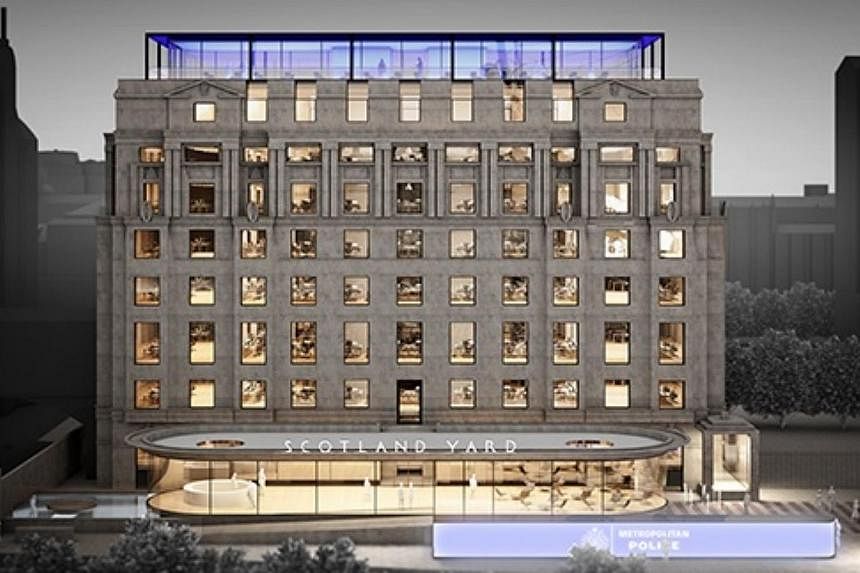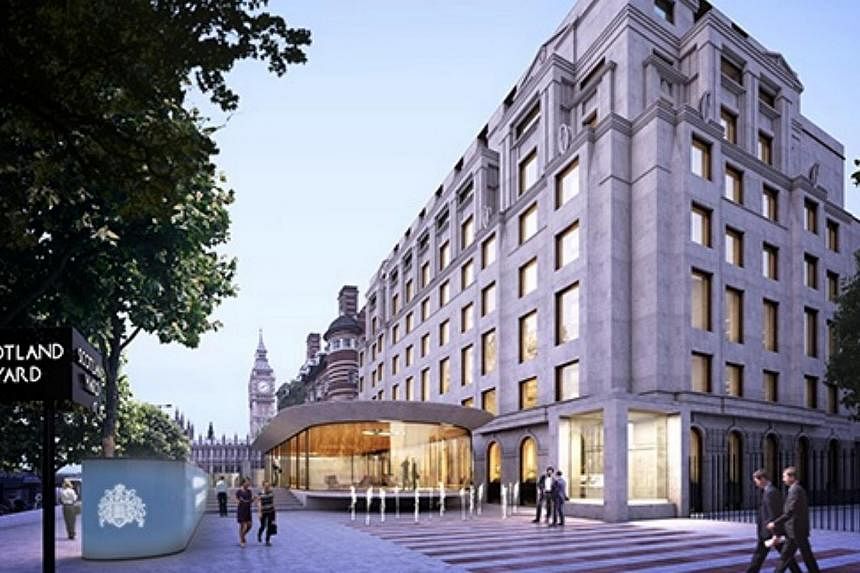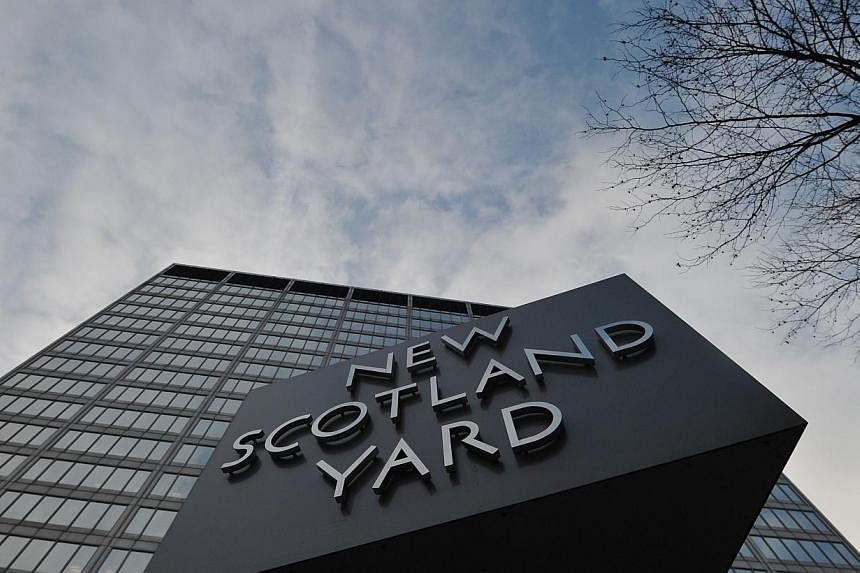London's world-famous Scotland Yard police force has put its headquarters up for sale with a price tag of £250 million (S$ 517million).
The 22-storey, 56,000 square metre office block, a short walk from both the Houses of Parliament and Buckingham Palace at Victoria, has been home to the Metropolitan Police - "the Met" - since 1967.
The force, which is moving to a more modern building nearby, says the triangular, outdated 1960s building is costly to run and badly designed for modern working practices.
"This is a hugely expensive building to run and operate," said Craig Mackey, deputy commissioner of the force. "If we were to stay in these premises we would have to spend about £50 million on it."
Here are five facts about Scotland Yard:
1. Scotland Yard is the home of the Metropolitan Police in London - but while the location of the force's headquarters has changed over the years since its formation in 1829, the name has remained largely the same.
When the Metropolitan Police force was established in 1829, its headquarters was at 4 Whitehall Place in London. The back of the building opened onto a courtyard and was used as a police station. It became known as Scotland Yard.
By 1887 the Metropolitan Police headquarters expanded to 3, 4, 5, 21 and 22 Whitehall Place, 8 and 9 Great Scotland Yard, 1, 2 and 3 Palace Place and various stables and outbuildings.
The headquarters were moved in 1890 to premises on the Victoria Embankment, which became known as New Scotland Yard.
In 1967, the need for a larger and more modern headquarters resulted in a shift to the force's current premises at Broadway in south-west London. The New Scotland Yard name went with the force to the new location.
2. The origins of the Scotland Yard name are unclear, but there are two theories: The first is that the location of the original headquarters was the site of a residence owned by the Kings of Scotland before Scotland's union with England; the second is that a man named Scott owned the land in the Middle Ages.
3. The Scotland Yard name will follow the force to its next headquarters in the Curtis Green building on Victoria Embankment in 2015. Also following the force to the new location: the iconic, triangular Scotland Yard sign, which is said to turn 14,000 times a day.
4. The name Scotland Yard is now synonymous with the Metropolitan Police force itself, as well as with its headquarters. "The Yard" has become one of the most famous police forces in the world. It has been featured in detectives stories about fictional heroes Sherlock Holmes and Hercule Poirot.
Famous cases investigated by the Metropolitan Police include that of the world's most famous serial killer, Jack The Ripper, who butchered at least five women in 1888 in the slums of east London and whose identity has never been confirmed, and the Kray twins - Ronnie and Reggie - gangsters who ruled London's East End during the 1960s.
5. Scotland Yard is the location of a private so-called "Black Museum" featuring crime-related artefacts such as letters from Jack the Ripper, and the pot in which serial killer Dennis Nilsen boiled the heads, hands and feet of his victims in order to remove their flesh and simplify the disposal of their bodies.
The 150-year-old collection has not been open to the public since Victorian times, but the Met has been urged by MPs to open its doors to the public in order to generate more funding for the force.
Over the years, the museum is said to have entertained invited guests from Sherlock Holmes creator Sir Arthur Conan Doyle, to Laurel and Hardy.



